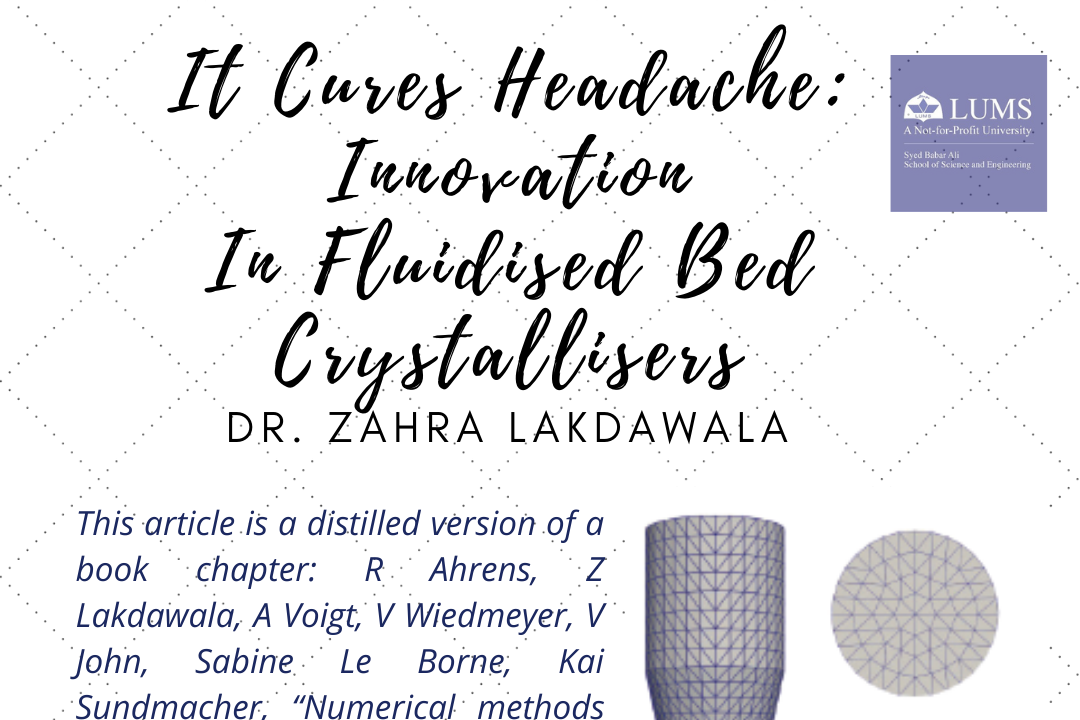
It Cures Headache: Innovation In Fluidised Bed Crystallisers
Crystalline solid products are around us everywhere – they are central to industrially-relevant production as 70% of the products of the chemical and pharmaceutical industry are sold as solids. A prominent example is an aspirin tablet that we take for a headache. An important part in designing a crystallization process of getting solid materials from liquid solutions is to control the size and shape of the crystals. Fundamental and applied research in this area of crystallization leads to improved process performance with less energy consumption as well as more efficient material utilization.
Such solid-liquid systems are complex and challenging in many ways and fluid flow and particles interact in a variety of fashions. In the lab setup, the evolution of the crystal size and shape distribution is tracked by means of image-based shape estimation. This information is then in turn exploited to obtain the crystallization kinetics that are governing the crystallization process. To incorporate these complexities, the numerical methods have been extended and new tools are developed to simulate crystallization in a better way. Our focus has been on relevant phenomena of crystal growth of multi-faceted crystals as well as on crystal agglomeration with specifically developed model experiments working with selected and well-understood model substances. Experiments and flow field simulations serve to parameterize a coupled population balance equation system. This equation system allows predicting the dynamic evolution of the crystal size and shape distribution. Crystal agglomeration is a major phenomenon of crystal size enlargement. Our research concentrates on the understanding and modeling of this phenomenon.
The crystal growth and agglomeration can be combined where the main control variables are temperature profiles and flow rates. Crystals can be separated by size and withdrawn at a varying crystallizer height. The size separation is again controlled by the flow rates.
Crystallization processes are often modeled in terms of a crystal population instead of considering the behaviour of each individual crystal. Utilising macroscopic conservation laws, one derives a system of coupled equations for the population, a so-called Population Balance System (PBS) that describes an averaged behaviour of the crystals. The crystallization process within a moving incompressible fluid is modeled—the movement is in pipes and/or batch crystallizers. It is assumed that the suspension of the crystals is dilute such that the impact of the crystals on the fluid flow is negligible. Then, the first two conservation laws are the balance of the linear momentum and the conservation of mass for the fluid flow, which are modeled by the incompressible Navier-Stokes equations.
Our study shows that the simulations can indeed be used to model the processes in Fluidized Bed Crystallizers. There is a good agreement between experimental and simulation results. These can be further tested virtually using different operating conditions and settings and this paves the way for cheaper, faster, and informed design and innovation of future fluidized bed crystallizer.
This article is a distilled version of a book chapter: R Ahrens, Z Lakdawala, A Voigt, V Wiedmeyer, V John, Sabine Le Borne, Kai Sundmacher, “Numerical methods for coupled population balance systems applied to the dynamical simulation of crystallisation processes,” in Dynamic Flowsheet Simulation of Solids Processes (2020).

